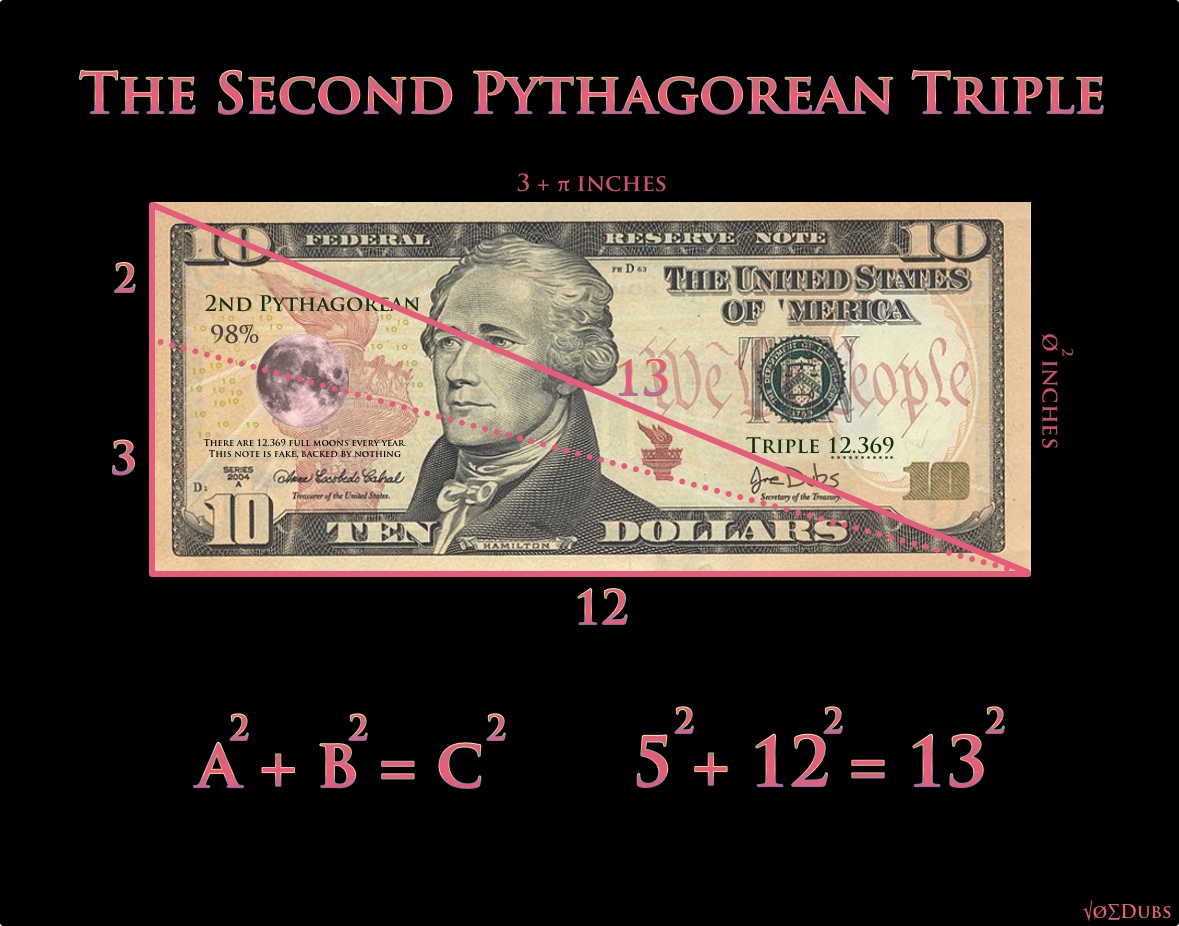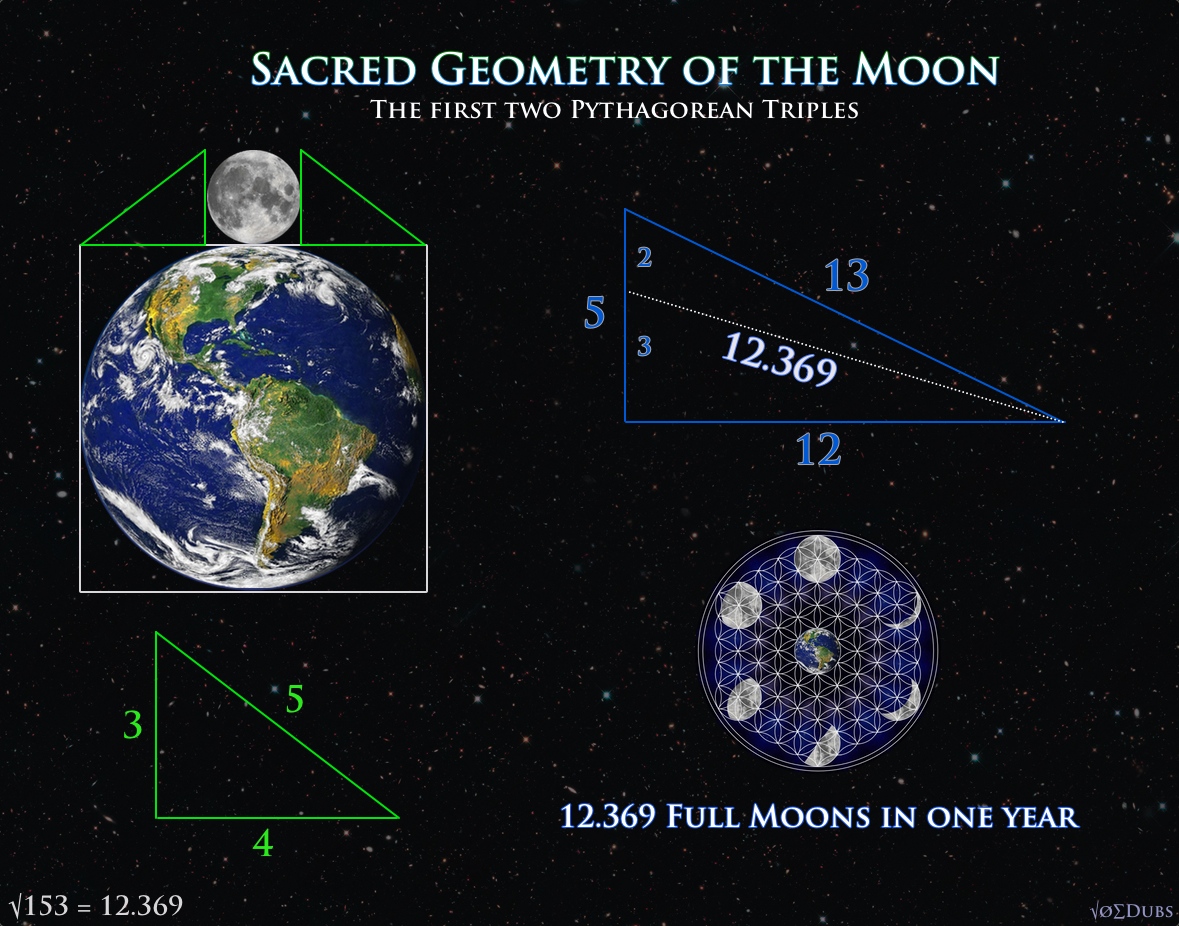Pythagorean Triples

You’ve heard of the Pythagorean Theorem. Looking at a triangle, A squared plus B squared equals C squared. But this doesn’t work with all triangles, only specific triangles with specific lengths. The first set of numbers that work for this formula are 3,4 and 5. (3squared=9, 4squared=16, and 5squared equals 25). 9+16=25. Check! This works, so this is the first “Pythagorean Triple”. The second triangle that satisfies the equation is based on lengths of 5,12, and 13. Now if you divide the side of 5, into 2 and 3(The Perfect Fifth in Music Theory), and draw a line as shown(dotted line), it’s length is the amount of full moons in one solar year.(12.369) I wonder if the privately owned Federal Reserve Bank was thinking of the Moon and the second Pythagorean Triple when they came up with the measurements of the US dollar.(The FED…


